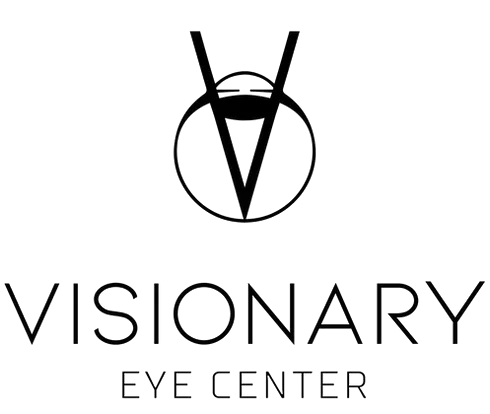Jupiter Farms - West
Military Trail - East
What is Myopia?

What is Myopia?
- posted: Jul. 11, 2023
People rely on eyesight on a daily basis to survive. But different people have different qualities of vision as there are countless eye conditions they can possibly suffer from throughout their lifetime.
Myopia, or nearsightedness, is one of the most common eye disorders. It is under the category of refractive errors where the eye does not bend or refract light properly. People who have myopia experience blurred vision when looking at things from a distance and it gets clearer as they move closer to the target object.
Global Demographics
In America alone, an estimated 25% are affected by myopia. Globally, studies have shown that this eye disorder grows exponentially at these rates based on these age groups:
· 6% by 6 years old
· 15% by 9 years old
· 25% by 13 years old
· 40% by 17 years old
While myopia can occur at any age, its development is more commonly observed in children between ages 8 to 12. It may worsen during growth spurts in a person’s teenage years and possibly decline in his later years at 20 to 40 years old.
Risk Factors
Genetics. Myopia is hereditary so if parents have this eye condition, chances are that their children will have it too.
Frequent up-close work. While genes are the biggest factors that contribute to someone developing myopia, children who spend little time outdoors and do frequent close work have higher chances of myopia.
Other health issues. This eye condition usually develops in early childhood but there are some cases where it occurs in adulthood due to visual stress, diabetes, and other health issues that can trigger its development.
Nearsightedness Symptoms
Below are the top common signs and symptoms that people who have it experience:
· Eyestrain
· Headaches or migraines
· Blurry distance vision
· Squinting when watching TV
Myopia Treatment
The good news though is that myopia is not an eye disease, it is a common eye disorder that can be remedied through these options:
Corrective glasses. Children who have a low prescription don’t have to wear the glasses all the time but those with high levels may not have much of a choice.
Contact lenses. They are a better alternative for patients who play sports and do other physical activities.
Eye laser procedures. This is only recommended for patients above age 20 as the eye stops growing by then. It permanently removes the corneal tissue.
Myopia may be a low-risk condition, but it is still doing epidemic numbers around the world. Left undetected, it can lead to complications in a child’s life. Don’t wait and schedule an eye exam now if you detect signs of refractive error.
The post What is Myopia? appeared first on Visionary Eye Center.

What is Myopia?
- posted: Jul. 11, 2023
People rely on eyesight on a daily basis to survive. But different people have different qualities of vision as there are countless eye conditions they can possibly suffer from throughout their lifetime.
Myopia, or nearsightedness, is one of the most common eye disorders. It is under the category of refractive errors where the eye does not bend or refract light properly. People who have myopia experience blurred vision when looking at things from a distance and it gets clearer as they move closer to the target object.
Global Demographics
In America alone, an estimated 25% are affected by myopia. Globally, studies have shown that this eye disorder grows exponentially at these rates based on these age groups:
· 6% by 6 years old
· 15% by 9 years old
· 25% by 13 years old
· 40% by 17 years old
While myopia can occur at any age, its development is more commonly observed in children between ages 8 to 12. It may worsen during growth spurts in a person’s teenage years and possibly decline in his later years at 20 to 40 years old.
Risk Factors
Genetics. Myopia is hereditary so if parents have this eye condition, chances are that their children will have it too.
Frequent up-close work. While genes are the biggest factors that contribute to someone developing myopia, children who spend little time outdoors and do frequent close work have higher chances of myopia.
Other health issues. This eye condition usually develops in early childhood but there are some cases where it occurs in adulthood due to visual stress, diabetes, and other health issues that can trigger its development.
Nearsightedness Symptoms
Below are the top common signs and symptoms that people who have it experience:
· Eyestrain
· Headaches or migraines
· Blurry distance vision
· Squinting when watching TV
Myopia Treatment
The good news though is that myopia is not an eye disease, it is a common eye disorder that can be remedied through these options:
Corrective glasses. Children who have a low prescription don’t have to wear the glasses all the time but those with high levels may not have much of a choice.
Contact lenses. They are a better alternative for patients who play sports and do other physical activities.
Eye laser procedures. This is only recommended for patients above age 20 as the eye stops growing by then. It permanently removes the corneal tissue.
Myopia may be a low-risk condition, but it is still doing epidemic numbers around the world. Left undetected, it can lead to complications in a child’s life. Don’t wait and schedule an eye exam now if you detect signs of refractive error.
The post What is Myopia? appeared first on Visionary Eye Center.
Jupiter Farms - West
10088 W Indiantown Rd Ste B,
Jupiter, FL 33478
Military Trail - East
3893 Military Trail #4,
Jupiter, FL 33458

